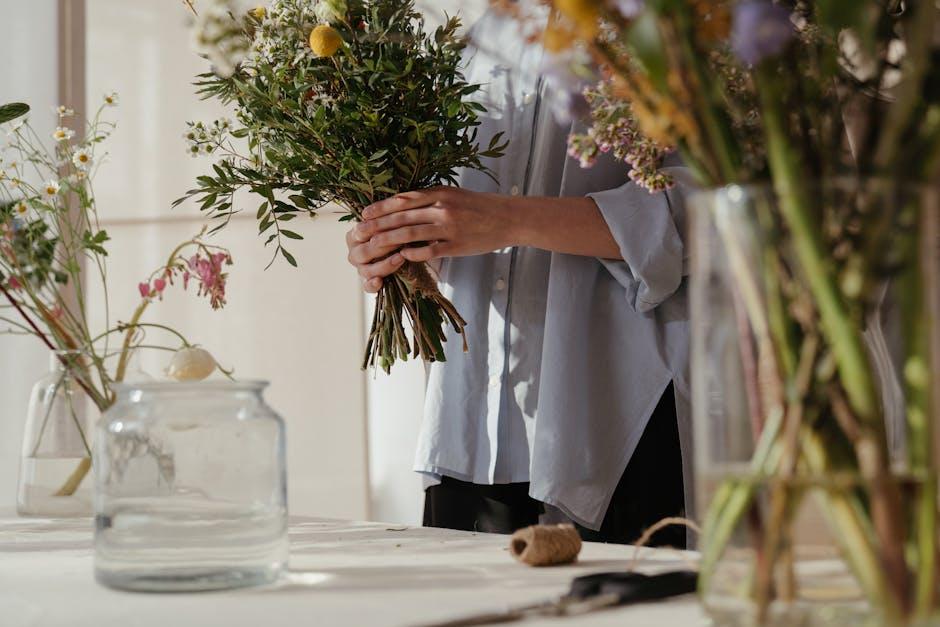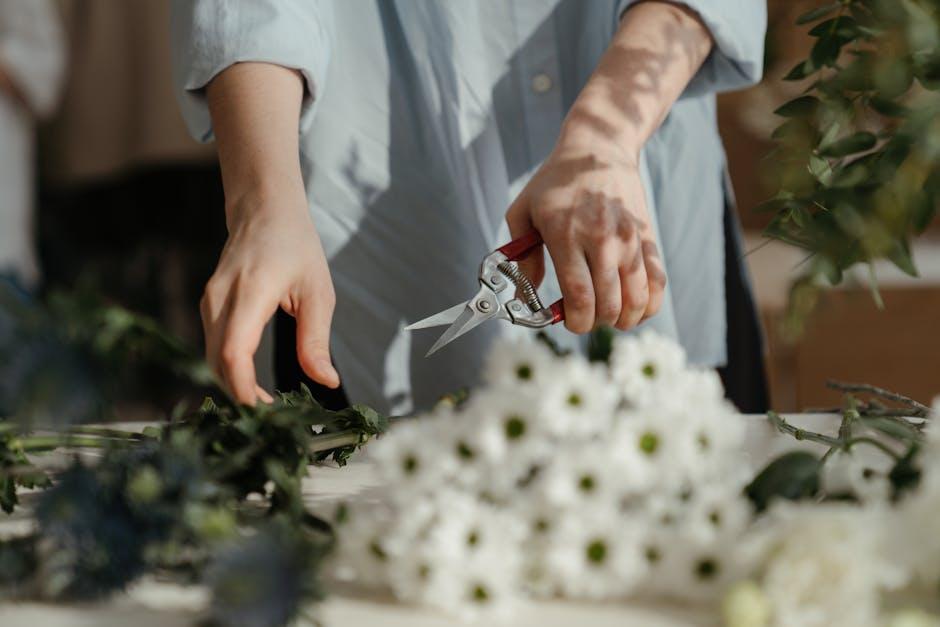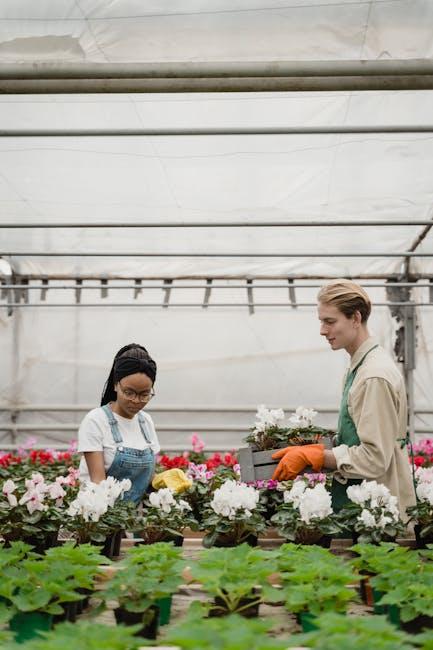Imagine stepping into your kitchen and reaching effortlessly for fresh, fragrant herbs that you nurtured with your own hands. A DIY herb garden offers not only the joy of cultivating greenery but also the satisfaction of enhancing your meals with vibrant, homegrown flavors. Whether you have a sprawling backyard or just a sunny windowsill, creating your own herb garden is an accessible and rewarding project. In this article, we’ll explore simple steps and creative tips to help you grow a thriving herb garden, tailored to your space and lifestyle.
Choosing the Perfect Spot for Your Herb Garden

Finding the right location for your herb garden is essential to its success. Most herbs thrive in areas where they can bask in at least 6 hours of direct sunlight daily. Think sunny windowsills, balconies, or a cozy corner of your backyard that enjoys vibrant morning rays. Equally important is ensuring good air circulation to keep the foliage healthy and prevent mold or mildew. Avoid spots that are overly shaded or prone to high winds, as these can stunt growth and diminish the flavors of your herbs.
Consider the practical side as well – accessibility matters. Place your herbs within easy reach so you’re encouraged to snip fresh leaves while cooking or brewing teas. If you’re planting multiple types, grouping them based on their watering needs can simplify maintenance. Here’s a quick guide to help you choose the optimal spot:
- Sunlight: South-facing spots are ideal.
- Soil Drainage: Well-drained soil prevents root rot.
- Space: Enough room for plants to spread out.
- Protection: Shelter from harsh winds and heavy rain.
Selecting the Right Herbs for Your Climate and Cuisine

Choosing the perfect herbs for your garden begins with understanding the environment they’ll thrive in. Different herbs have varying needs when it comes to sunlight, soil type, and moisture levels. For instance, Mediterranean herbs like rosemary and thyme prefer well-drained soil and lots of sunlight, making them ideal for warm, dry climates. Meanwhile, mint and chives flourish in cooler, more shaded areas with consistent moisture. Assess your local climate conditions and then match herbs that will naturally adapt, ensuring robust growth without excessive effort.
Next, consider the flavors and aromas that best complement your culinary style. Whether your palate leans toward bold, spicy, or delicate herbs, selecting a diverse mix can elevate your cooking. Here’s a quick guide to pair your kitchen needs with the most suitable herbs:
- Fresh salads: Basil, dill, chervil
- Hearty soups and stews: Bay leaves, sage, thyme
- Grilled dishes and marinades: Rosemary, oregano, tarragon
- Teas and refreshing infusions: Mint, lemon balm, chamomile
| Herb | Climate Preference | Ideal Culinary Use |
|---|---|---|
| Thyme | Warm, Sunny | Stews, Roasts |
| Mint | Cool, Moist | Teas, Salads |
| Basil | Warm, Sunny | Salads, Pasta |
Essential Tools and Materials for a Successful Start

Starting your own herb garden doesn’t have to be complicated, but having the right tools and materials on hand will make the process smoother and more enjoyable. Begin by gathering basic gardening tools such as a small trowel, pruning shears, and gardening gloves. These essentials will help you plant seeds, trim your herbs, and maintain your garden with ease. Additionally, choose containers or pots that suit your space – whether it’s a sunny windowsill, balcony, or backyard – ensuring they have proper drainage to keep roots healthy.
Beyond tools, the choice of soil and seeds plays a crucial role. Opt for a high-quality potting mix enriched with organic matter to provide nutrients that encourage robust growth. When selecting seeds or starter plants, consider varieties like basil, thyme, parsley, and mint, which are beginner-friendly and versatile in the kitchen. To keep your herb garden thriving, you’ll also need a watering can with a fine spout for gentle watering and plant markers to label your herbs clearly for easy identification.
| Item | Purpose |
|---|---|
| Small Trowel | Digging and planting seeds |
| Pruning Shears | Trimming herbs to encourage growth |
| Gloves | Protecting hands while gardening |
| Containers with Drainage | Proper root health |
| Potting Mix | Providing nutrients |
| Watering Can | Gentle watering |
| Plant Markers | Easy herb identification |
Step-by-Step Planting and Maintenance Tips

Begin by choosing a sunny spot in your garden or a bright windowsill that receives at least 6 hours of sunlight daily. Use well-draining soil rich in organic matter for your herb containers or garden beds. Before planting, gently loosen the herb seedlings’ roots and space them with enough room to grow-typically 6 to 12 inches apart depending on the herb variety. After planting, water thoroughly to settle the soil around the roots but avoid waterlogging. Adding a layer of mulch helps retain moisture and suppress weeds, ensuring your herbs have the best start.
Maintaining your herb garden is a continuous, rewarding process. Keep the soil moist by watering regularly, ideally when the top inch feels dry to the touch. To encourage leafy growth and prevent your herbs from becoming woody, pinch back the tips regularly and prune any flowers that appear. Fertilize your herbs every 4 to 6 weeks with a balanced, water-soluble fertilizer, and watch for pests or diseases to address promptly. Use the chart below as a quick care reminder for popular herbs:
| Herb | Watering Frequency | Pruning Tip | Sunlight Needs |
|---|---|---|---|
| Basil | Every 2-3 days | Pinch tops weekly | Full sun (6+ hrs) |
| Thyme | Once a week | Trim after flowering | Full sun |
| Mint | Keep soil moist | Cut back in summer | Partial shade ok |
| Rosemary | Every 1-2 weeks | Prune spring growth | Full sun |
Key Takeaways
Embarking on the journey of creating your own DIY herb garden is more than just a project-it’s an invitation to slow down, connect with nature, and savor the simple joys of nurturing life. Whether your green space flourishes on a sunny windowsill or in a sprawling backyard, each sprig of basil and rosemary you grow will bring fresh flavors and a sense of accomplishment to your kitchen. So grab your pots, soil, and seeds, and start planting the seeds of your own aromatic oasis. With patience and care, your herb garden will soon become a thriving testament to the beauty that grows when creativity meets nature.











